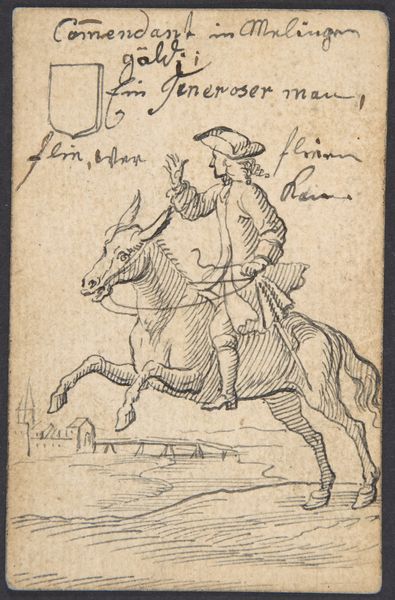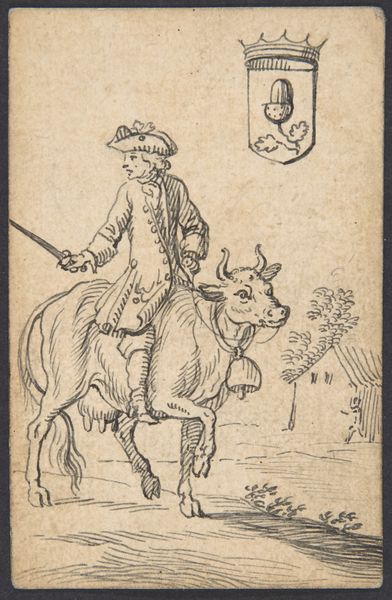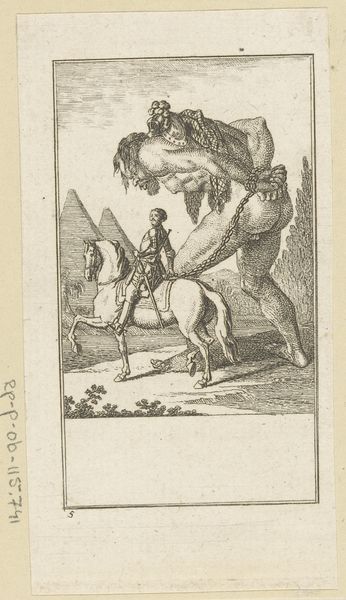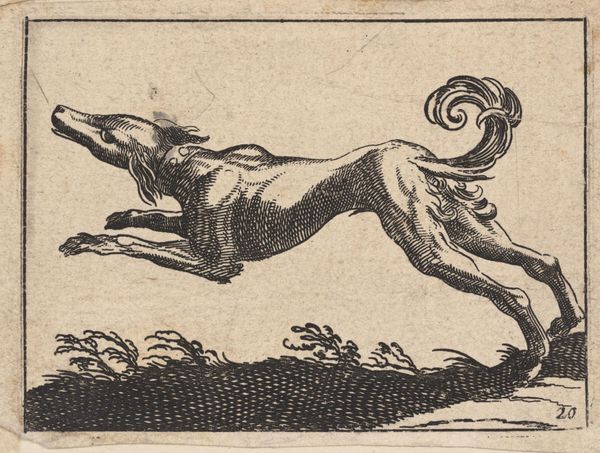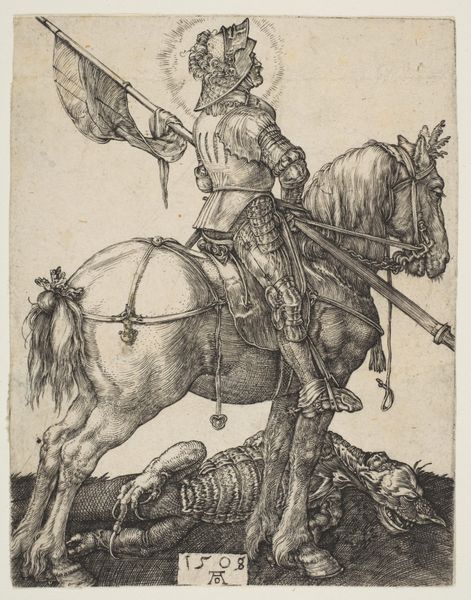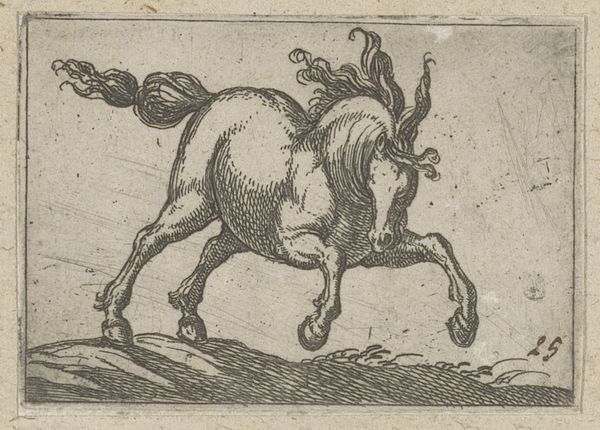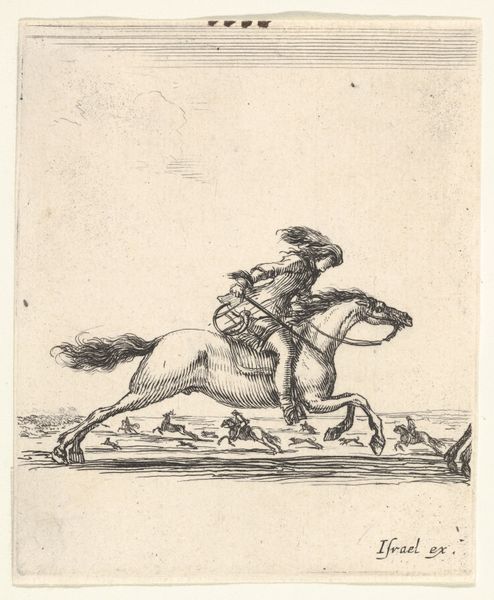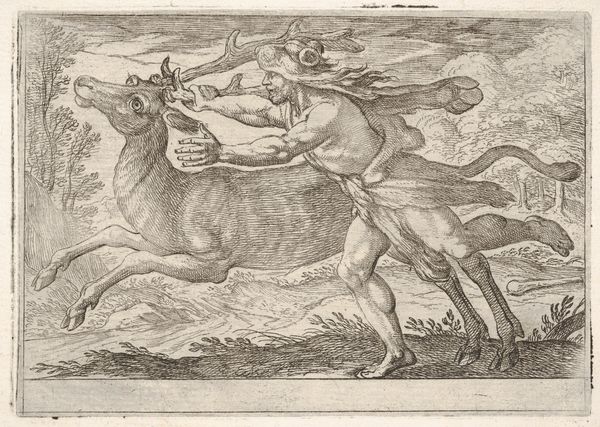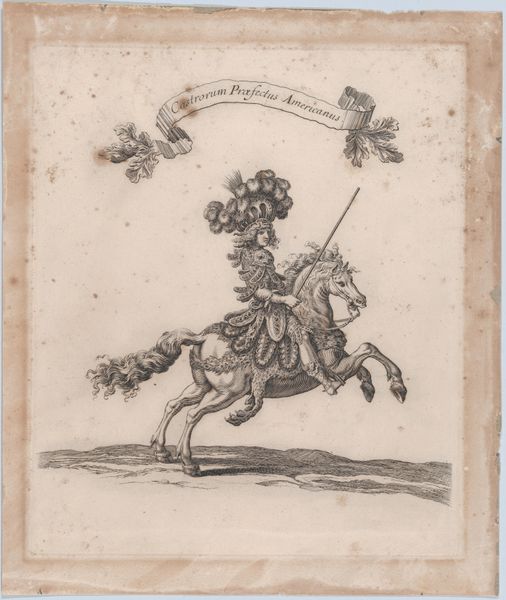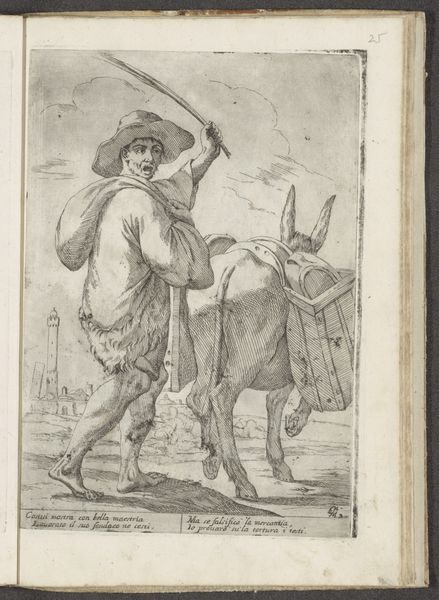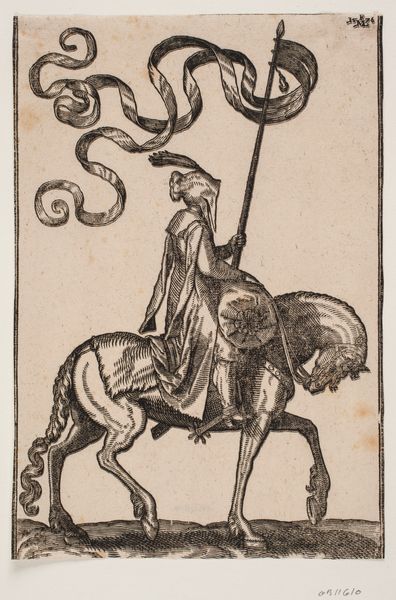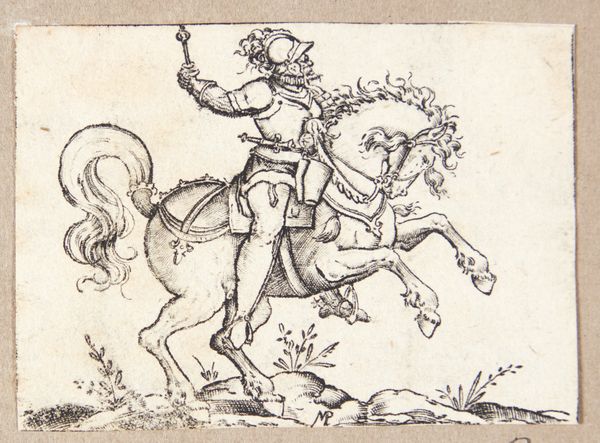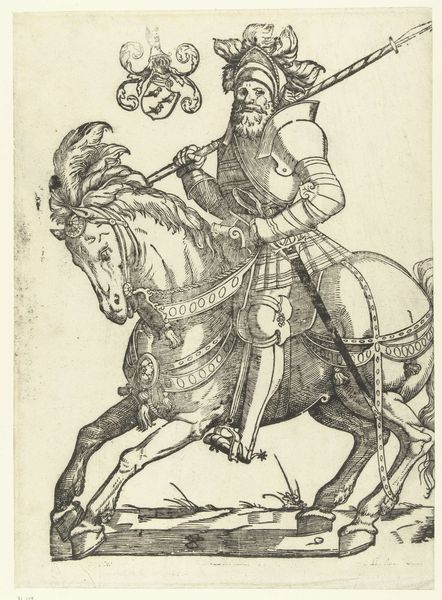
drawing, print, ink
#
drawing
#
narrative-art
#
baroque
# print
#
figuration
#
ink
Dimensions: sheet: 3 9/16 x 2 5/16 in. (9 x 5.9 cm)
Copyright: Public Domain
Curator: Well, I must say, this little ink drawing by Johannes Brandenberg dating to somewhere between 1712 and 1730 rather charms me. It’s entitled *Acorn Knave: A Man Astride a Swine*. Editor: My first thought is how small it is, a mere fragment really, yet rendered with such precise lines. I wonder, what sort of paper and ink would have been accessible to Brandenburg, and how that influenced the piece's ultimate form? Curator: Ah, yes, materiality. But consider the figure—a man, quite composed despite his precarious perch atop a wild pig. Above and to the left, a crest bearing the image of an acorn. It reads like a commentary on class and social mobility, perhaps. Editor: Or maybe even the raw materials available to him determined the form? Hog bristles for brushes, perhaps the source for inspiration of the subject! How closely linked are our means and modes of art creation? It's compelling that it uses humble materials for subject and tool. Curator: It certainly speaks to resourcefulness! Still, I'm drawn to the enduring power of certain images—the rider, the banner, even the pig itself. They resonate across centuries, invoking archetypes of power, rebellion, and perhaps, even the absurd. Editor: Perhaps. But consider the labor embedded in its creation; who funded the materials and time needed to execute this, when and where did Brandenburg train, and how all of that factors into not just the image itself, but what the image signifies. This isn't merely iconography. It's the social imprint of an object being constructed. Curator: I appreciate how you anchor this piece within its lived historical context, how raw materials and production intersect with representation. For me, the enduring strength lies in that intersection – seeing the past reflected back through universal motifs and that playful use of allegory, and appreciating what symbols have persisted to hold meaning across generations. Editor: And for me, seeing the constraints and opportunities provided by readily available means of production can illuminate both artistic and social currents more widely.
Comments
No comments
Be the first to comment and join the conversation on the ultimate creative platform.
